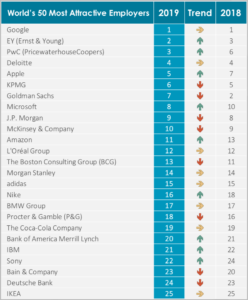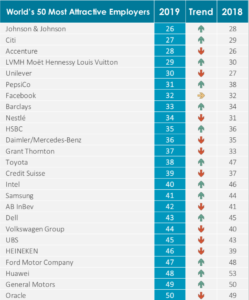Do you remember when cell phones first came out? If you were with Verizon and you wanted to switch to Sprint, you actually had to change phone numbers! Think about how that would impact your world today. We switch from company to company, go-between social apps all day long, never worrying that our “profile” our data, won’t follow us.
In the mid-2000s the FCC finally made the determination that we should be able to move our phone number from one carrier to the next. Our phone number was part of our personal data. It’s how people recognized us.
Now, think about how our jobs are similar to our phone number, in terms of data.
You go and work at company A. You do a great job. You want to use that great work to get a new job at company B, but company A is restricted from telling company B anything about you, besides maybe some dates of employment.
What if we had a full digital file of everything we did at company A. Our performance records. Our training and development records. Maybe even records of peer reviews, etc. Exactly which jobs you held and what you did.
Do you think that would help you get that next job?
For most, it would help a bunch. If you sucked it might hurt your chances, but hey, you sucked, get better at your current job and turn it around!
Workday has been working on making employee data portable between Workday customers. That is close, and it’s definitely a step in the right direction, but so far you can’t take your Workday record and take it to a competitor HCM solution like Oracle or SAP. But, if you worked at three Workday HCM shops in a row, theoretically they are putting into place the ability for you to make your employment data portable.
That’s really cool! Because one of the biggest issues we face as candidates and as employers is truly knowing what someone has done previously, and letting a potential future employee know what we have actually done. Unfortunately, way too many people flat out lie on their resume/application/LinkedIn profile, that it’s hard to take any of those things as concrete proof of work.
I actually really like the idea of employee data portability. We allow employees to have a copy of their employee file, but so often, there isn’t really any substance in those files to help an employee get their next job. I also, get that if you had a negative job experience, you might not want that, but let’s face it, most people have some negative job experiences along the way, and I think all of that would come out in the wash.
We are the collective of our experiences, not just our most recent experience. As a hiring manager, I’m looking for trends and growth, understanding an individual might have made a bad job choice that didn’t fit well, and that might pop out. But, I also like the fact that if someone is truly a bad apple, that will also pop out.
We are all quickly becoming portable data sets. Facebook, Instagram, Snap, TikTok, Twitter, etc. already know this. Most consumer marketing pros already know this. Employer technology tends to lag behind, but I think we are all headed down a path where one day getting hired will be less about your resume or profile, and more about your complete data set you can show an employer with a simple click.



